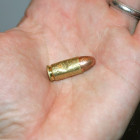
Screaming Headlines, Hype and PR Stunts Cloud Picture of Youth Violence in Chicago
|
By Eric Ferkenhoff and Maryam Jameel
Tallying Chicago’s violence during the first half of 2012, including a 39 percent jump in murders, it can be difficult to get what criminologist Tracy Siska is talking about. True, the streets are bloodied by gang warfare, said Siska, head of the Chicago Justice Project, an independent, non-profit research group that analyzes criminal justice data. The numbers don’t lie; there had been 260-plus murders through the end of June, up 72 over the same period last year. And overnight Tuesday, two girls 12, and 13, became the latest child victims of the gunfire here. Neither were thought to be intended targets, but rather were victims of errant gunfire just days after the release of a University of California Davis study showing the prevalence of stray-bullet victims.
But Siska has argued much of the media is playing the hype game, skewing reality for Chicagoans or observers by screaming with headlines about more city children getting murdered this public school year than any year since 2008 – the first full year of the recession – and countless stories of overnight mayhem suffered in many Chicago neighborhoods. There has been a parade of stories – ones Siska would agree should and must be told.
